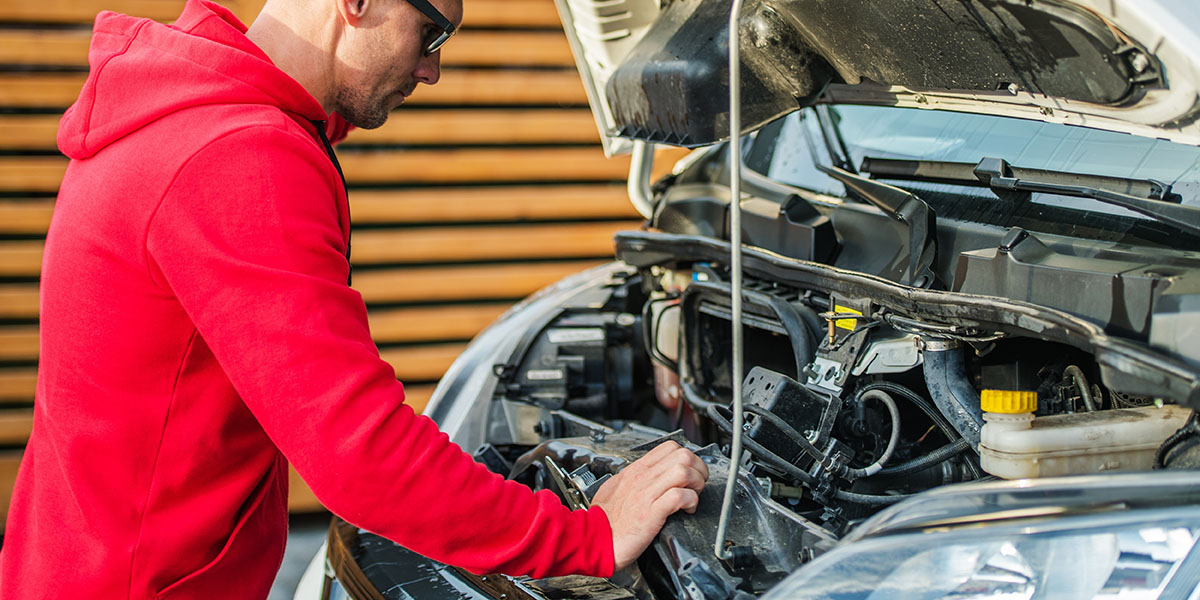Summertime means vacation time for lots of folks, which means you’re not only taking your RV on the road — you’re taking your family. And if you’re going to take what (or more specifically, who) is most precious to you, you’ll also want to make sure that your RV is safe and road ready before you drive out onto the asphalt into the summer heat. So, like so many other things in the RV life, you need a checklist: a summer RV maintenance checklist.
Well, consider that wish granted! This RV maintenance checklist is a simple guide for keeping your RV in top shape during summer months.
Essential RV Maintenance Tasks for a Summer Checklist
1. Inspect and clean your roof and exterior.
- Inspections. Check your RV’s roof for cracks, punctures, or loose seams, especially before and after periods of heavy use or harsh weather.
- Cleaning. Clean your roof thoroughly with RV-specific cleaners to remove dirt, debris, and prevent mold and mildew growth.
- Sealants. Inspect the sealants around vents, skylights, and other roof penetrations for cracks or deterioration, and reseal as needed with appropriate RV-grade sealants to prevent leaks.
- Awnings. Inspect the awning for wear and tear, clean it regularly with mild soap and water, and ensure it extends and retracts smoothly.
- Exterior surfaces. Wash and wax your RV exterior regularly to protect against harsh summer UV damage and to maintain its appearance.
2. Give those tires a closer look.
- Tire pressure. Check tire pressure before each summer trip and monthly during storage, adjusting to the manufacturer’s recommended PSI.
- Inspection. Look for cracks, bulges, cuts, or uneven wear on the tread and sidewalls.
- Age. Replace tires every five to seven years, regardless of tread depth, as rubber deteriorates over time.
- Rotation. Rotate tires every 5,000 to 7,000 miles to ensure even tread wear.
- Summer storage. Cover tires when storing the RV for extended periods to protect against UV damage.
3. Double-check your batteries.
- Charging. Fully charge batteries before and after each trip and keep them topped off with a battery conditioner during storage. A good investment is a trickle charger which keeps your batteries fully charged when not being used.
- Fluid Levels. For flooded lead-acid batteries, check the water levels and refill with distilled water as needed.
- Terminals. Inspect and clean battery terminals and connections to prevent corrosion and ensure a strong electrical connection.
- Storage. Store batteries in a cool, dry place and disconnect them if storing the RV for an extended period.
4. Refresh your plumbing and water systems.
- Sanitization. Sanitize the freshwater tank according to the manufacturer’s guidelines.
- Leaks. Check for leaks in the water lines and appliances and address them promptly.
- Water heater. Flush the water heater to remove sediment and check the anode rod annually.
5. Manually check the engine and mechanical hot spots.
- Engine fluids. Check and top off engine oil, coolant, transmission fluid, and other fluids.
- Engine maintenance. Follow the manufacturer’s recommendations for oil changes, filter replacements, and other routine engine maintenance.
- Belts and hoses. Inspect belts and hoses for cracking, deterioration, or proper tension.
- Brakes. Have brakes inspected and serviced to ensure proper function.
- Wheel bearings (trailers/fifth wheels). Repack or replace wheel bearings to prevent overheating and axle failure.
6. Prep and test run appliances and systems.
- HVAC. Clean air conditioner filters and inspect seals and gaskets to ensure efficient cooling and heating.
- Propane system. Check for leaks around connections using a soapy water solution and ensure the system’s hoses and regulators are in good condition.
- Appliances. Clean and maintain RV appliances like the refrigerator, stove, and water heater according to manufacturer’s recommendations.
- Generator. Run the generator for at least two hours to keep it in good working order.
- Slide-outs. Clean and lubricate slide-out seals and mechanisms following manufacturer’s instructions.
7. Ensure safety equipment is present and operational.
- Detectors. Check smoke alarms and carbon monoxide detectors regularly and replace them as indicated by the manufacturer.
- Fire extinguishers. Ensure fire extinguishers are accessible and within their expiration dates.
- Lights. Check all interior and exterior lights for proper function, including brake lights, turn signals, and headlights.
8. Round out with general maintenance and storage (when ready).
- Lubrication. Lubricate hinges, locks, and other moving parts to prevent rust and ensure smooth operation.
- Pest control. Seal any cracks or crevices with steel wool or sealant to keep out rodents and insects.
- Storage. Store the RV in a covered area or use a breathable RV cover to protect it from the elements.
One Last Reminder for Your RV Maintenance Checklist
It’s important to remember to always consult your RV’s owner’s manual for specific maintenance schedules, recommendations, and instructions for your particular make and model. Some tasks may require specialized tools or knowledge, and it’s best to consult a qualified RV technician for those jobs.

Leave a Reply